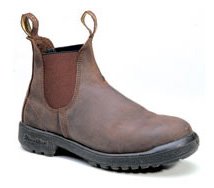
I love happy accidents in the garden, especially when they're self-sown annuals that I don't expect to be hardy in my USDA Zone 5 garden.
Several years ago, I planted a little annual called Dahlberg daisy in a corner of the bed that lines our driveway.
I grew Dahlberg daisy from seed when I was in my mad seed-growing phase. It's a bushy, branched little plant about six to 10 inches tall with lots of small yellow daisy flowers and threadlike leaves that have an aromatic, citrus-like scent. I intended it for containers, but had a few plants left over and put them in the ground along a low stone wall.
To my delight, these daisies have been reappearing in the gravel driveway below the wall each summer. It takes until mid-July for them to get to blooming size and then they cheerfully bloom their heads off for the rest of the summer.
In reading up about Dahlberg daisy, I found that it thrives in sunny, well drained, sandy soil with a pH of 6.8 or higher and that it is quite drought tolerant - no wonder it loves growing in the gravel here.
This year, the plants started to grow during a period of drought in May and June. I'm amazed at how tenacious they are - I didn't expect them to do as well as previous years because of the dryness. (The drought broke with lots of thunderstorms, but that is another story.)
Dahlberg daisy isn't readily available in cell packs at garden centers, so if you want it, you need to start the plants from seed. This isn't hard, but it's a good idea to start the seeds indoors as it takes about four months from sprouting to blooming. (Tips on how to grow from seed are here.)
I think of Dahlberg daisy as a great rock garden plant for mid-summer when most of the alpine perennials have finished blooming. Stick in a few Dahlberg daisies, and your rock garden will come to life again, just like my driveway does.
With its self-seeding tendencies, you'll probably only have to grow it from seed once. Even though Dahlberg daisy reseeds, I don't find that it gets weedy - and if it grows where you don't want it, well, the seedlings are really easy to pull out.
By the way, Thymophylla tenuiloba is the botanical name and the plant is native to south central Texas and northern Mexico. Seed companies offer it under the name Dahlberg daisy or Golden Fleece.
Find Dahlberg daisy at Stokes Seeds.








